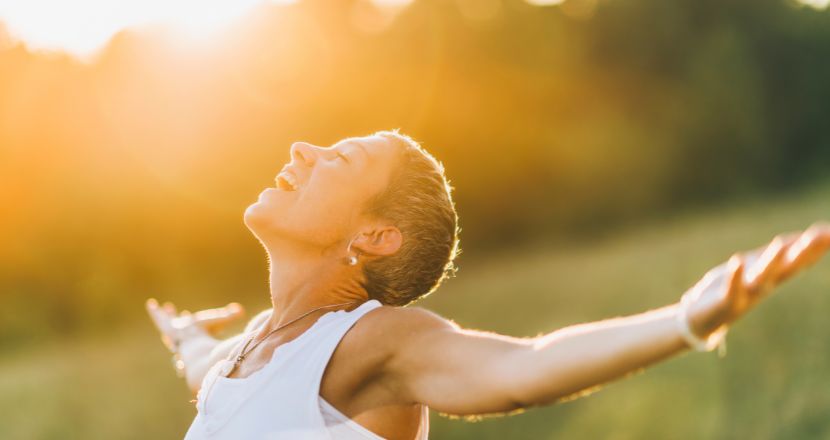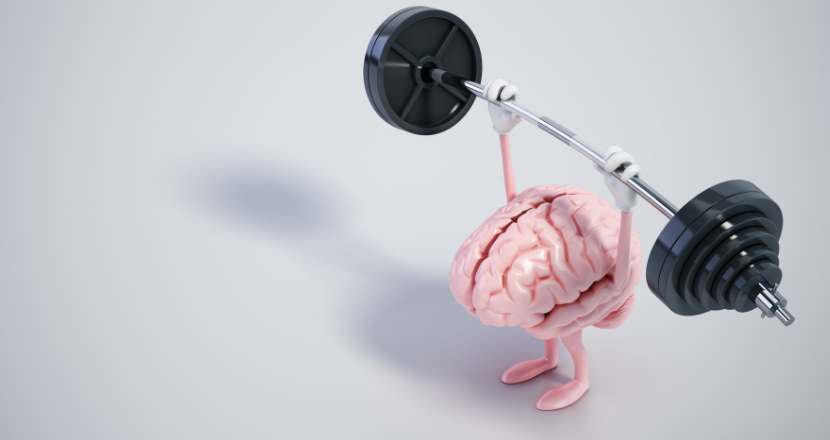In today’s fast-paced world, where mental and physical strains are common, nurturing a deep connection with our own bodies is more crucial than ever. Body awareness—the mindful recognition of our physical selves and our movements in space—serves as a cornerstone for achieving a harmonious balance between mind, body, and environment.
This comprehensive guide draws on reputable sources to explore the facets of body awareness and offer actionable advice to enhance it. Let’s dive into the essence of body awareness and unravel the practices that can enrich our well-being.
At re-origin, we help you retrain your brain to feel safe in your body once again after chronic illness. Our techniques not only provide you with the framework to rewire your brain but also improve body awareness and help you manage chronic conditions better.
If you are interested in hearing more, please book a free info call.
What are the Three Components of Body Awareness Called?
Body awareness encompasses three integral components: proprioception, interoception, and vestibular awareness.
Proprioception refers to the sense of how our body parts are oriented and move in space.1 Interoception is the awareness of internal bodily sensations, like hunger, thirst, and the heart’s rhythm.1
Vestibular Awareness plays a pivotal role in balance and spatial orientation, aiding in head stability and movement.1
These components work in tandem to foster a comprehensive understanding of our physical existence and our interactions with the world around us.
Why is Body Awareness Important?
Enhancing body awareness is paramount for several reasons. It is a key element in managing chronic pain, reducing anxiety and stress, and improving overall well-being. By becoming more attuned to our physical sensations, we can recognize the early signs of emotional and physical distress, allowing for prompt and appropriate self-care measures. Furthermore, body awareness is instrumental in improving posture, balance, and movement efficiency, making it a vital component of healing.2
Body Awareness and Neuroplasticity
The intriguing relationship between body awareness and neuroplasticity underscores the brain’s remarkable adaptability and its potential to enhance our physical and emotional well-being. Neuroplasticity, the brain’s ability to reorganize itself by forming new neural connections throughout life3, plays a critical role in the development and enhancement of body awareness. Engaging in body awareness practices can stimulate neuroplastic changes in the brain regions associated with proprioception, interoception, and the vestibular system.4 This neurological rewiring not only improves our perception of bodily sensations and movements but also enhances our emotional regulation and resilience to stress.
Research suggests that as we become more attuned to the nuanced signals our bodies send us, we activate and strengthen neural pathways that support a deeper connection with our physical selves. This leads to improved mental health outcomes, reduced pain, and a heightened sense of overall well-being.4 Thus, the journey towards increased body awareness is also a journey towards leveraging the power of neuroplasticity, opening new doors to healing and personal transformation.
What Causes Poor Body Awareness?
Several factors contribute to poor body awareness, such as a lack of physical activity, chronic stress, and neurological or developmental disorders that affect the proprioceptive system and vestibular system.4 In today’s sedentary lifestyle, where screen time often replaces physical play and movement, many individuals, from a young age, miss out on crucial opportunities to develop a nuanced understanding of their bodily sensations and movements.
Difficulty with Body Awareness Can Cause
Poor body awareness creates a disconnection between the mind and body, which can have profound implications on mental and physical health, including increased susceptibility to anxiety, depression, chronic pain, and stress. Let’s delve deeper into how this disconnection exacerbates these conditions.
Anxiety
When there’s poor body awareness, an individual might struggle to recognize and interpret the body’s signals accurately. For instance, the inability to identify the physical manifestations of stress or anxiety, such as an increased heart rate or muscle tension, can prevent effective coping mechanisms from being employed. Without these mechanisms, minor stresses can escalate into persistent anxiety, as the individual remains in a heightened state of alertness without understanding why or how to alleviate these sensations.5
Depression
A disconnect from one’s bodily sensations can also contribute to depression. This disengagement can lead to a decreased ability to find pleasure in activities that once were enjoyable, including those involving physical engagement. The lack of awareness and attentiveness to one’s own needs and feelings can foster negative self-perception and a sense of isolation. Moreover, the body’s reduced ability to recognize and express emotions physically can stifle emotional processing and recovery, perpetuating the cycle of depression.5
Chronic Pain
In the context of chronic pain, poor body awareness can create a vicious cycle where the individual is more focused on the pain itself rather than the body as a whole. This hyperfocus can lead to an overestimation of pain signals and an underutilization of the body’s natural pain management resources.5
Furthermore, the inability to notice and address minor discomforts before they escalate can result in chronic conditions. The body’s pain response is also closely tied to emotional states; thus, a lack of integration between body and mind can intensify the perception of pain.
Stress
Stress is a natural response to challenges and demands, but the body’s ability to return to a state of rest is crucial for maintaining health. Poor body awareness can impede this process by making it difficult for individuals to recognize the physical signs of stress, such as tension or fatigue. Without recognizing these signs, individuals may continue to push through stressors without allowing for recovery or engaging in self-care practices. This continuous exposure to stress can strain the body’s systems, leading to long-term health issues and decreased resilience to future stress.5
Exercises to Increase Body Awareness
To combat poor body awareness, incorporating a variety of body awareness activities into your routine is highly beneficial. Adding physical play and movement to this mix introduces dynamic and enjoyable ways to connect with one’s body. Practices such as yoga, tai chi, and body scanning exercises focus on harmonizing movement with breathing, significantly enhancing the connection between mind and body.
These activities emphasize slow, deliberate movements and postures that require attention to form, balance, and the flow of energy through the body. They challenge both the vestibular and proprioceptive systems and foster a deepened sense of bodily presence and awareness.
The Role of Yoga in Enhancing Body Awareness
A regular yoga practice serves as a powerful tool to enhance body awareness. Each pose encourages practitioners to focus on the alignment of different body parts, the sensations of stretch and strength, and the rhythm of their breathing.6 This attention to the internal experience cultivates an acute awareness of bodily sensations, encourages mindfulness4, and can even illuminate areas of tension or neglect within the body that require care.
Tai Chi and Mindful Movement
Similarly, Tai Chi, a martial art known for its health benefits and meditative aspects, involves sequences of movements performed in a slow, focused manner accompanied by deep breathing. This practice not only improves balance and physical fitness but also heightens proprioceptive awareness—the body’s sense of position in space.7 Tai Chi’s emphasis on grounding, centering, and flowing movement patterns helps individuals develop a more attuned and responsive relationship with their body.
Body Scanning
Body scanning is a powerful mindfulness technique that promotes increased body awareness, aiding individuals in developing a deeper connection with their physical selves. This practice involves a deliberate focus on each part of the body, noting any sensations, tensions, or emotions that arise without judgment.2 The process not only cultivates a heightened awareness of bodily sensations but also encourages a state of relaxation and well-being by allowing the mind to acknowledge and release stored tension.
How to Practice Body Scanning
To begin a body scan, find a quiet, comfortable space where you won’t be disturbed. You can lie down or sit in a comfortable chair, ensuring your back is straight but not strained. Close your eyes to minimize distractions, and take a few deep breaths to center yourself.
Starting at the feet and moving upwards towards the head, shift your attention to different parts of your body. Notice the sensations in each area—whether warmth, coolness, tension, pain, or perhaps even the absence of sensation.8 It’s crucial to approach these observations without judgment or the need to change anything.2 The goal is simply to notice and be aware.
As you move through each body part, you may encounter areas where tension is held. Acknowledge these sensations, and as you exhale, imagine releasing this tension, allowing those muscles to relax and soften. This practice of progressive relaxation can significantly enhance your body awareness over time.2
The Benefits of Body Scanning
The University of Virginia Medical Center highlights body scanning as a simple yet effective way to tune into bodily sensations that are often overlooked in our day-to-day lives. This mindfulness practice can lead to improved physical and emotional well-being by promoting relaxation, reducing stress levels, and enhancing the human body’s capacity to deal with pain.2
Furthermore, according to resources from the University of Pennsylvania, the technique of progressive body awareness facilitated by body scanning can be particularly beneficial for individuals suffering from chronic pain or anxiety.8 By fostering a non-judgmental awareness of physical sensations, body scanning can help break the cycle of stress and tension that often exacerbates pain and anxiety symptoms.
Incorporating body scanning into your daily routine doesn’t require a significant time commitment. Even a few minutes can be beneficial. Many find it helpful to perform a body scan at the beginning or end of their day to help either prepare for the day ahead with a sense of calm or to release the day’s stresses before sleep.
The Power of Movement and Physical Play
Incorporating movement and physical play into daily life can also markedly improve body awareness. Activities that engage the body in varied and novel ways—such as dancing, playing sports, or even simple games like tag—encourage the brain and body to work together, enhancing coordination, spatial awareness, and proprioception.9
Engaging in physical play is crucial for children, in particular, for developing a solid foundation of body awareness from a young age. Through play, children learn to navigate their environment, understand their bodies’ capabilities and limitations, and develop essential motor skills.
Professional Guidance Through Physical and Somatic Therapy
For those seeking a more structured approach to training and enhancing body awareness, physical therapists and somatic therapists offer guided techniques tailored to individual needs. These professionals can provide exercises and therapies that specifically target proprioception and bodily awareness, helping individuals reconnect with their bodies, improve balance and coordination, and alleviate discomfort or pain.
Improve Body Awareness and Promote Neuroplasticity
These body awareness activities, by necessitating a heightened state of mindfulness and engagement with our physical selves, do more than just fortify our connection to our bodies; they actively rewire our brains, promoting neuroplastic changes that extend well beyond improved body awareness.
The deliberate focus and mindfulness inherent in meditation, such as in yoga and tai chi, coupled with the dynamic and varied challenges presented by physical play and movement, encourage the brain to form new neural pathways. This is neuroplasticity in action: the brain’s remarkable ability to adapt, reorganize, and evolve in response to our experiences and behaviors.
As we become more attuned to our body’s sensations, movements, and capabilities, our brain adapts to this increased level of sensory input and awareness, enhancing its capacity to process and respond to bodily information.
Embrace Body Awareness: A Path to Resilience and Personal Growth
Fostering a deeper understanding of our bodies through increased body awareness can lead to a more fulfilling and balanced life. It empowers us to listen to our bodies, recognize our own needs, and take proactive steps toward self-care and pain management. Whether through physical, occupational, or somatic therapy alone, mindful practice, or movement activities, each step toward better body awareness is a step toward improved health and well-being.
Poor body awareness and chronic stress can inhibit the brain’s plasticity, while positive, engaging activities that promote relaxation and mindfulness foster an environment in which the brain can adapt and grow more efficiently. This not only amplifies our bodily awareness but also enhances cognitive functions, emotional resilience, and overall mental health. Let’s embrace the journey of becoming more in tune with our bodies, for it is within this awareness that we find the key to resilience, healing, and profound personal growth.
At re-origin, we help you retrain your brain to feel safe in your body once again after chronic illness. Our techniques not only provide you with the framework to rewire your brain but also improve body awareness and help you manage chronic conditions better. If you are interested in hearing more, please book a free info call.







